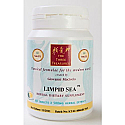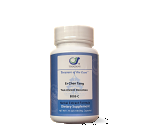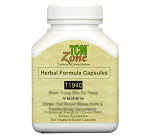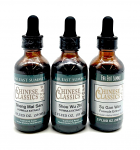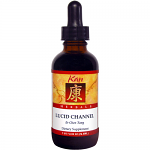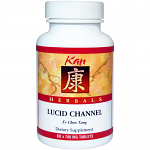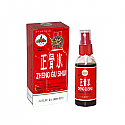Er Chen Tang
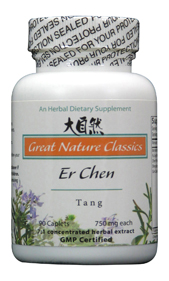
Er Chen Tang
| SKU | GN125 | |
| Brand | Great Nature Classic Tablets by Blue Poppy | |
| Unit Size | 90 Tablets | |
| Potency | 7:1 / 750 mg | |
| Chinese Symptomology | Cough with profuse white sputum, a sensation of fullness in the chest, nausea, vomiting, dizziness, palpitations. | |
| Actions | Removes dampness to resolve Phlegm; regulates the Stomach function. | |
| Pattern | Phlegm dampness | |
| Tongue | Pale; Thick, white and greasy or sticky | |
| Pulse | Slippery or Soft | |
| Branch | Spleen | |
| Chinese name | Er Chen Tang | |
| English name | Two Aged [Ingredients] Decoction | |
| Description | Within this formula, Ban Xia (Rhizoma Pinelliae), is the sovereign. It is acrid and warm and its nature is drying. It is able to dry dampness and transform phlegm as well as to downbear counterflow and harmonize the stomach and thus stop vomiting. Chen Pi (Pericarpium Citri Reticulatae), is the minister. It rectifies the qi and dries dampness. It aids in normalizing the qi and dispersing phlegm. The assistants are Fu Ling (Poria), and Sheng Jiang (uncooked Rhizoma Zingiberis). Fu Ling fortifies the spleen and seeps dampness. Once dampness is removed, the spleen may become effulgent and phlegm can no longer be engendered. Sheng Jiang downbears counterflow and transforms rheum. It is also able to neutralize the toxins in Ban Xia. It also helps Ban Xia and Chen Pi move the qi and disperse phlegm. Gan Cao (Radix Glycyrrhizae), is the envoy or guide. It regulates and harmonizes all these other medicinals. This formula comes from the Tai Ping Hui Min He Ji Ju Fang (Tai Ping Imperial Grace Formulary) published between 1078-1085 CE.* |
|
| Ingredients |
Ban Xia (Rhizoma Pinelliae) - 624.9 mg
Fu Ling (Poria) - 624.9 mg
Chen Pi (Pericarpium Citri Reticulatae) - 500.1 mg
Sheng Jiang (uncooked Rhizoma Zingiberis) - 375 mg
Gan Cao (Radix Glycyrrhizae) - 125.1 mg
|
|


